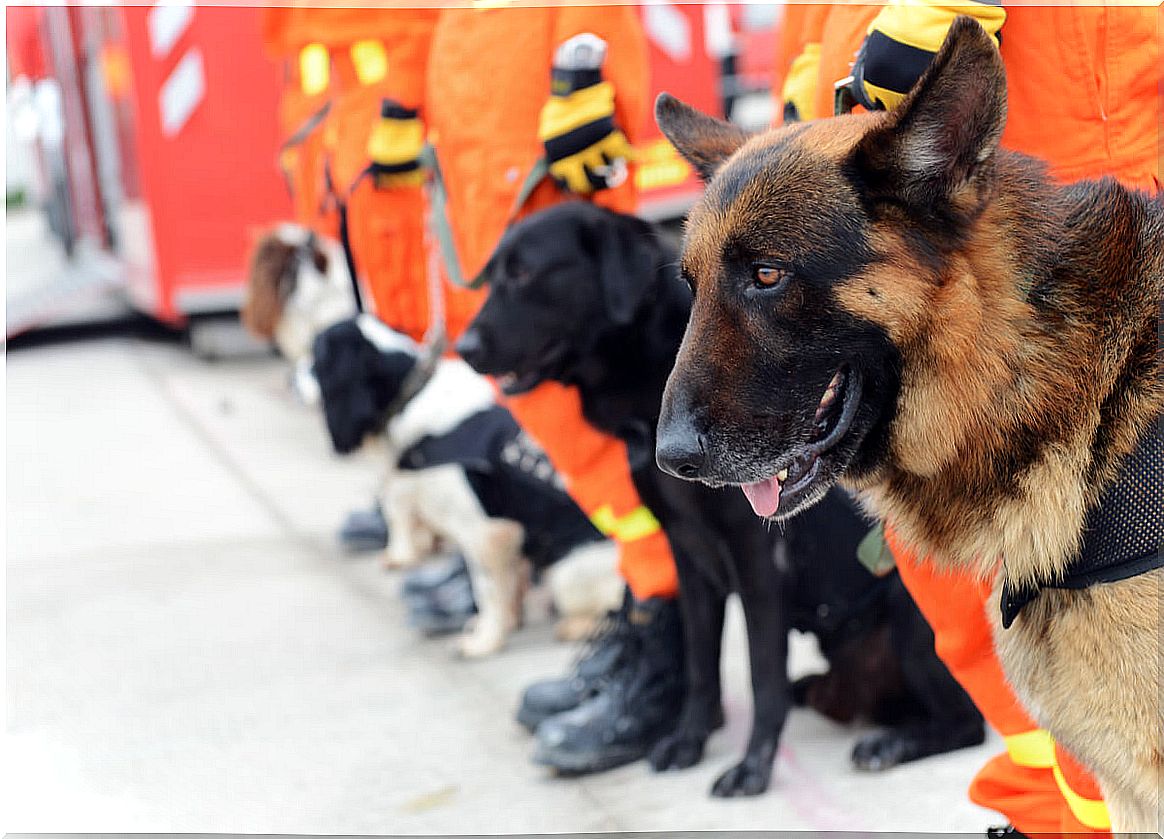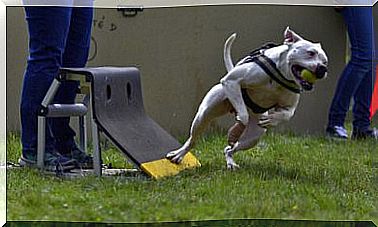Why Do Dogs Participate In Search And Rescue Activities?

Search and rescue dogs or firefighter dogs are domestic dogs (Canis lupus familiaris) trained to find living or recently deceased people in various settings. Some of them are areas covered by snow avalanches, forensic search to find murder victims, large areas destroyed by inclement weather and many more.
Everyone has a clear image of a dog accompanying health specialists or firefighters after a mishap such as an earthquake, but do you know why this species was chosen among all the others for this task? Here we give you an answer.
Animals of extraordinary capacities
Dogs have been with us since time immemorial (some studies cite more than 15,000 years), and therefore, discovering their capabilities and altruism has only been a matter of time and closeness.
Although all dog breeds are worthy of love, affection and understanding, not all dogs are suitable for search and rescue work. According to the NGO for Intervention, Aid and Emergencies (IAE), the most suitable breeds for this task are the following:
- Border collie.
- Golden retriever.
- Labradors.
- German shepherds.
- Belgian shepherds.

According to various studies published in veterinary journals, search and rescue dogs are categorized according to their function into three different groups:
- Follow-up: in this case, the dog remains controlled with a leash and is in charge of following the trail left by the victim. These dogs base their search on smell, and therefore, they need a garment or belonging to the person they are looking for to become familiar with their smell.
- Trackers: similar to the previous ones, but these animals usually work without being attached to the leash and can get away to a certain distance from the trail they are looking for in search of the victim. In addition, these dogs are capable of differentiating the smell of the person sought from contaminated samples in the environment (such as the footsteps of other people).
- “Scenting dogs” : These dogs work well with emergency teams, in addition, they always let loose in the area and act freely. They are based on the detection of odors in the environment and not on a tangible trace, unlike the rest. Based on their training, they can detect the scent of living people or corpses.
As we have seen, the types of search and rescue dogs are categorized according to their method of tracking the victim, but why the dog and not another species?
An extraordinary nose
As many of you may have guessed, the answer lies, above all, in its excellent olfactory ability. For comparison, humans have five million olfactory cells, while the dog has more than 250 million.
Due to the extraordinary development of this sense, dogs are able to identify the characteristic smell of the victim at certain distances, since a living human body releases about 40,000 skin cells per minute in the medium. This microscopic material mixes with watery and oily secretions produced by body perspiration, which gives rise to the so-called ” scurf ” (something similar to dandruff).
The scurf can also comprise elements external to the human anatomy itself, such as perfumes, shampoos, deodorants and other materials. All this combination of biological and non-biological factors generate the trail or aroma that the dog will follow to search for the victim.
Not everything is an anatomical question
It is clear that the powerful canine sense of smell is a decisive factor in choosing domestic dogs for these intricate and complex jobs, but it is not the only one. According to studies, the African elephant ( Loxodonta africana ) has 1984 olfactory receptor genes, twice that of dogs, but it is not to this species that we have delegated the task of saving our lives, right?
Another factor that makes dogs ideal for these tasks is their disposition and trust with the human being. The training of a search and rescue dog lasts around 18 months, with more than 20 hours of work per week. Quite simply, any other species is not domesticated enough to support this kind of learning.

A job that saves lives
As we have seen, search and rescue work is an arduous activity that requires a lot of training and effort, both physical and emotional. Dogs perform these jobs based on their olfactory ability, but their disposition, empathy and tendency to domestication and learning are also essential for them to carry out this task.
After exploring this type of topic, one thing is clear to us: in addition to owing unconditional joy, joy, company and affection to the dogs, in some cases these animals can save our lives.









